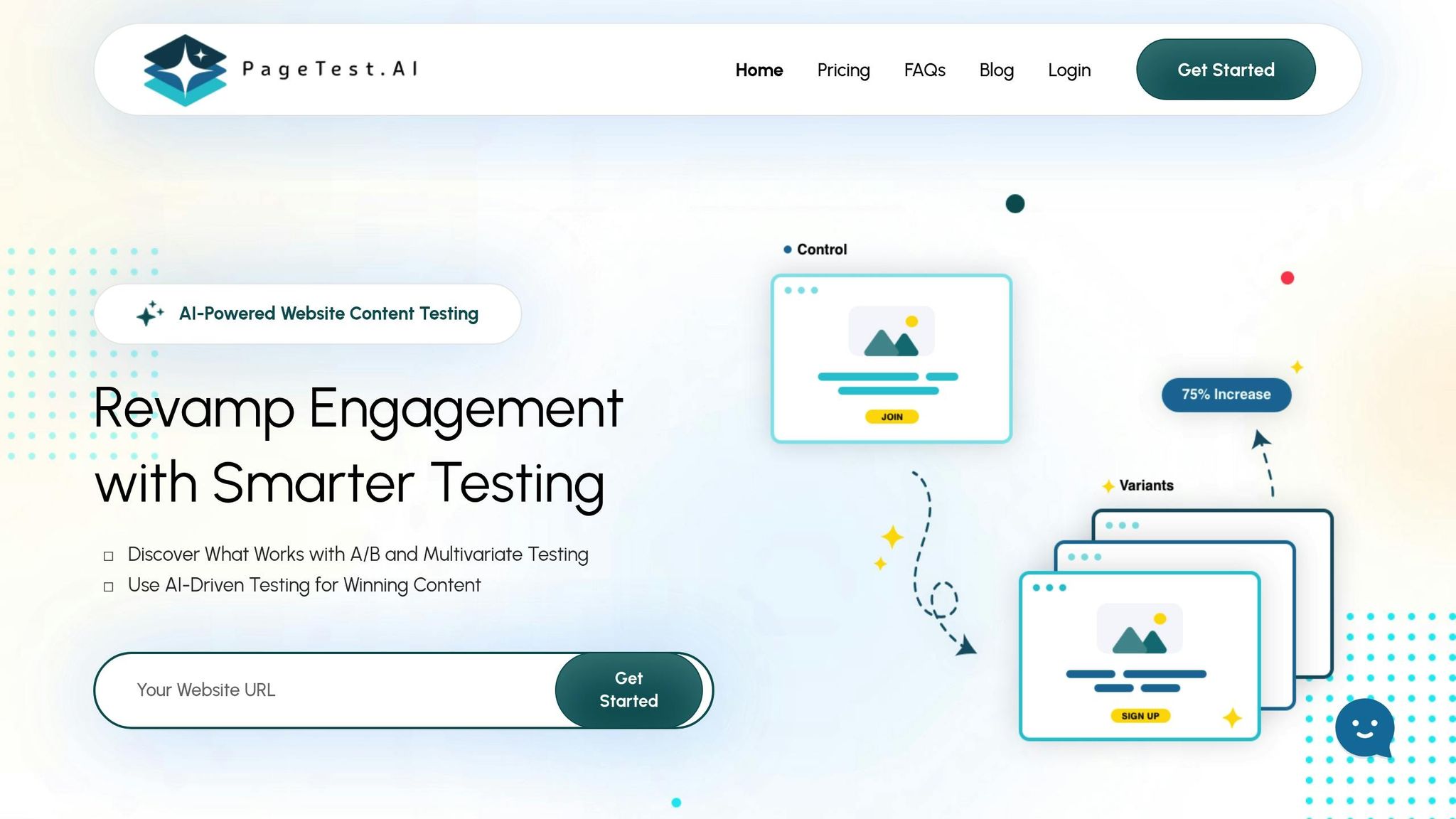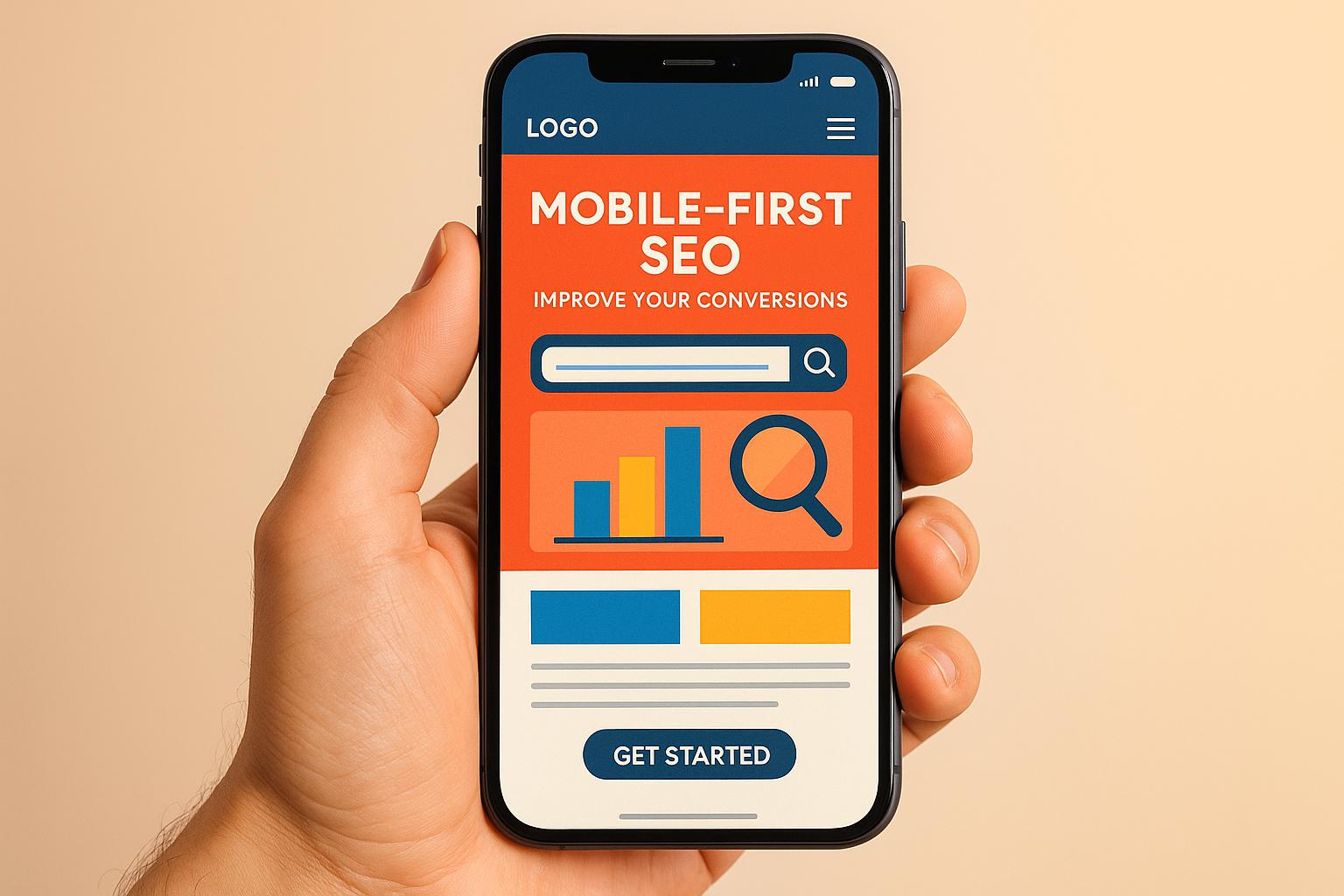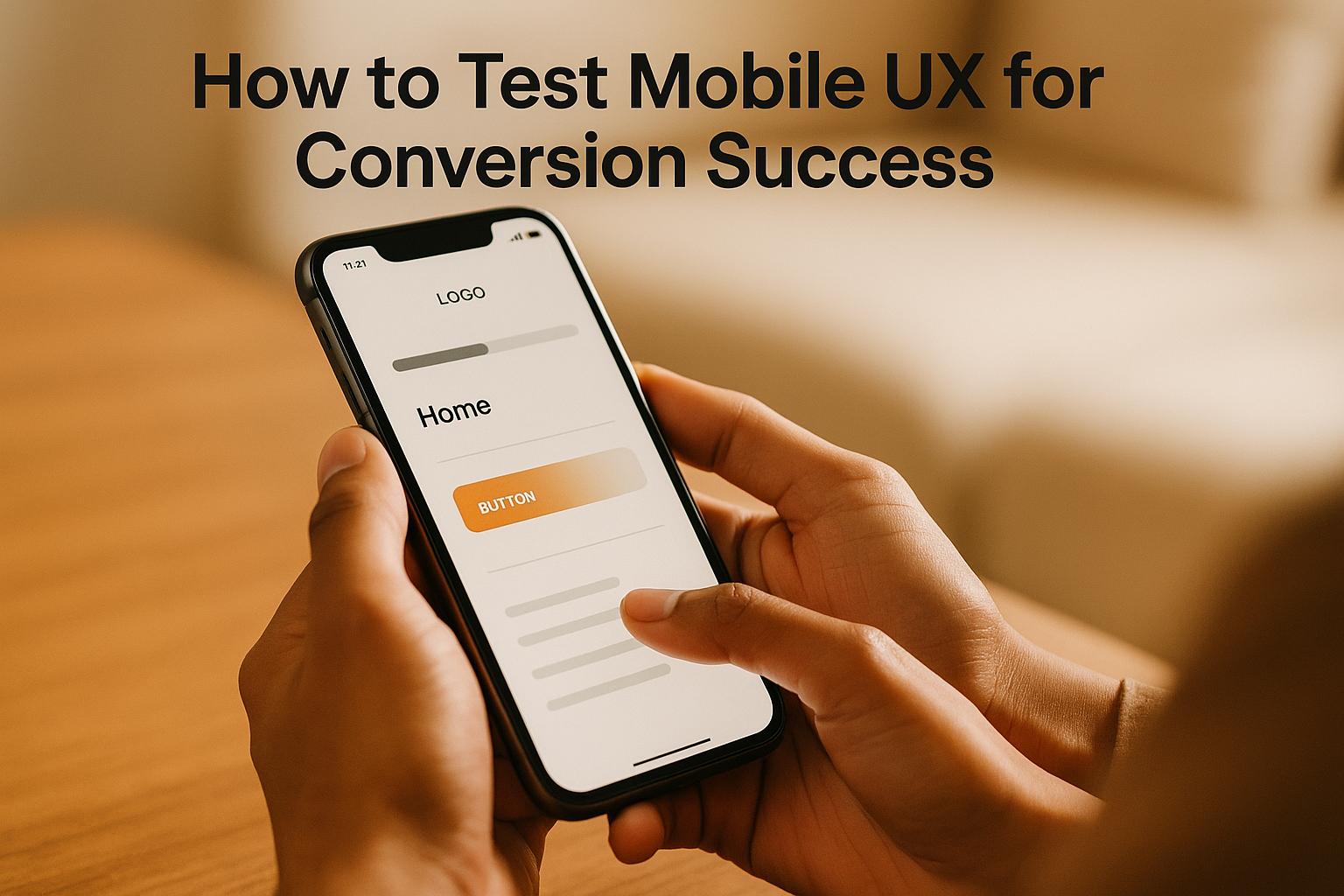

How Real-Time Segmentation Boosts Mobile Conversions

How Real-Time Segmentation Boosts Mobile Conversions
 06-10-2025 (Last modified: 06-10-2025)
06-10-2025 (Last modified: 06-10-2025)
Real-time segmentation is transforming how businesses engage with mobile users. By analyzing live user behavior and preferences, companies can instantly deliver personalized experiences, driving higher conversions, better engagement, and improved retention rates. Here’s the crux of why it works:
- Personalization matters: Mobile users respond better to content and offers tailored to their immediate needs.
- Speed is key: Real-time segmentation groups users in milliseconds based on live interactions.
- Proven results: Businesses using this strategy report higher click-through rates, conversion rates, and retention.
For example, platforms like AvaTrade converted 12% of anonymous users into registered accounts using behavior-based segmentation, while SPORT1 achieved push notification open rates 2-3 times the industry average.
With tools like PageTest.AI, even small businesses can implement these strategies without coding expertise, making real-time segmentation accessible to all. This approach isn’t just effective – it’s becoming a necessity for staying competitive in the mobile-first world.
Conversion Rate Optimization for Mobile Apps
How Real-Time Segmentation Affects Mobile Conversion Rates
Research shows that businesses leveraging behavior-based segmentation often see significant improvements in engaging mobile users and driving actions that matter. Companies using real-time segmentation frequently report higher conversion rates compared to older, static methods. By delivering personalized and timely interactions, this approach not only boosts user engagement but also enhances overall satisfaction. These real-time insights directly contribute to measurable gains in both engagement and conversions.
Key Statistics on Real-Time Segmentation Results
When real-time segmentation is in place, several performance metrics typically see a boost. For instance, conversion rates – the percentage of users completing actions like purchases, sign-ups, or tutorials – improve as user experiences are tailored to individual preferences and behaviors.
Click-through rates (CTR) for push notifications and in-app messages also rise when the content aligns with real-time user signals. This shows that personalized messages resonate far better than generic ones.
Retention rates see a positive shift too. Users who experience tailored interactions tend to stay active longer, while churn and uninstall rates drop as personalized experiences meet their expectations more effectively.
Metrics like daily active users (DAU) and monthly active users (MAU) further highlight these improvements, with many businesses observing increased app engagement after adopting real-time segmentation strategies.
Comparing Different Segmentation Strategies
Different segmentation approaches vary in how effectively they optimize mobile conversions. Static segmentation, for example, struggles to adapt to the ever-changing nature of user behavior. Behavioral segmentation, which looks at past user actions to predict future ones, offers more relevant insights but can still lack the immediacy needed in mobile environments. Psychographic segmentation, focused on user attitudes and interests, adds depth but is often limited by its static nature and complexity in real-time scenarios.
For mobile users, whose intent can shift rapidly, these limitations become even more apparent. On the other hand, AI-powered real-time segmentation combines multiple data sources – current behavior, historical patterns, device context, and even environmental factors – to deliver highly responsive, personalized experiences. This approach adapts to user actions in the moment, providing contextually relevant responses that align with evolving user expectations. As mobile users demand faster and more personalized interactions, real-time segmentation stands out as a critical tool for achieving competitive conversion rates.
Tools and Methods for Real-Time Mobile User Segmentation
Advancements in technology have revolutionized real-time mobile segmentation, making it possible to analyze user behavior instantly. Today’s tools leverage machine learning and real-time data processing to create dynamic user profiles that update continuously as users engage with apps and websites.
These tools gather data from various sources, such as app activity, browsing habits, purchases, location, and device details, to form actionable user segments. What sets them apart from older methods is their speed and flexibility – adjusting classifications in mere milliseconds as new behavioral data comes in. This progress paves the way for AI integration and cross-channel strategies that elevate mobile personalization to new heights.
AI-Powered Segmentation Tools
Artificial intelligence has reshaped mobile user segmentation by enabling behavioral profiling that digs deeper than basic demographics. AI tools analyze user interactions to create detailed profiles that accurately predict future behavior.
Using behavioral profiling, AI examines micro-interactions within apps, like how long users spend on specific screens, which features they engage with most, their purchasing habits, and what prompts them to leave. This level of detail uncovers patterns that manual analysis might miss.
Dynamic customer journeys are another game-changer. These journeys adapt in real time to individual behaviors and preferences. For instance, if a user browses products in the evening but tends to make purchases during lunch breaks, AI can adjust the timing and content of messages to align with these habits.
AI also enhances cohort analysis, taking it beyond traditional methods. By automatically identifying groups with similar behaviors – like shared engagement patterns or retention rates – AI often uncovers user segments that would otherwise go unnoticed.
Machine learning ensures these segments improve over time. By analyzing how users respond to different messages, offers, and experiences, the system creates a feedback loop that sharpens segmentation accuracy and boosts personalization efforts.
Thanks to cloud computing, businesses of all sizes can now access these advanced AI tools, making sophisticated segmentation achievable without the need for massive technical resources. Beyond AI, integrating data across channels ensures consistent segmentation and messaging, no matter where users interact.
Cross-Channel Integration and Personalized Messaging
Real-time segmentation doesn’t stop at individual apps or websites; it extends across multiple channels to create unified user profiles. This ensures that user segments remain consistent whether someone engages via a mobile app, website, email, or social media.
Mobile analytics platforms play a central role here, gathering and consolidating data from various sources. These platforms track user behavior across devices and channels, building comprehensive profiles that guide segmentation. This often involves connecting mobile SDKs, web analytics tools, email marketing platforms, and CRM systems.
With cross-channel data, personalized messaging becomes far more effective. Businesses can deliver highly targeted communications, like push notifications for abandoned carts, email recommendations based on app activity, or social media ads featuring products viewed on mobile.
Timing is critical for personalized messages. Cross-channel integration helps identify the best times to reach users, whether through morning emails, evening push notifications, or weekend social media ads, depending on individual preferences.
Real-time trigger campaigns take this a step further by sending messages based on specific user actions. For example, if someone views a product multiple times across different platforms without purchasing, the system can automatically send a personalized discount offer through their preferred channel.
Tools like PageTest.AI enhance this process by allowing businesses to test different messaging strategies across channels. By experimenting with variations in language, timing, and format, companies can ensure their messages are not only reaching the right audience but also driving conversions effectively.
The technical backbone of cross-channel integration includes APIs to link platforms, data warehouses to store unified profiles, and real-time systems that react within seconds of user actions. While this infrastructure requires investment, it delivers significant returns through better user engagement, higher conversions, and more efficient marketing spend.
Together, AI-driven insights and cross-channel integration make real-time segmentation a powerful tool for boosting mobile conversions and personalizing user experiences.
sbb-itb-6e49fcd
Case Studies: Real-Time Segmentation Success Stories
Case studies highlight how real-time segmentation can dramatically improve mobile conversions. These examples showcase how companies revamped their mobile engagement strategies, leading to noticeable gains in app opens, click-through rates, and conversions. They also emphasize the power of AI-driven personalization in achieving these results.
SPORT1: Increasing Push Notification Open Rates

SPORT1, a leading sports media platform in Germany, leveraged detailed segmentation during user onboarding to engage millions of users. By tailoring notifications to specific interests – like winter sports enthusiasts – SPORT1 sent highly relevant push notifications. These included both transactional updates, such as live ticker alerts, and editorial content covering breaking sports news.
This targeted approach paid off. SPORT1 achieved 5 million app opens per month and push notification open rates as high as 8%, which is 2–3 times higher than industry benchmarks.
“Customer journey functionality is also available for use. The support is also excellent: they can assist you with any questions or implementations you may require.”
AvaTrade: Converting Demo Users into Real Accounts

AvaTrade, a global online trading platform, used behavior-based segmentation and cross-channel messaging to convert anonymous users into registered accounts. They categorized users as either “Anonymous” or registered, then designed tailored messaging flows. Over a 7–10 day period, they sent push notifications and in-app messages every other day, guiding users toward account registration.
By incorporating Dynamic Content into their transactional messages, AvaTrade achieved an average click-through rate 9.4 times higher than the industry standard. Additionally, they converted 12% of anonymous users into registered accounts.
“We’ve been able to convert an impressive 12% of ‘Anonymous’ users with our engaging campaigns that utilize push notifications and in-app messages when using Pushwoosh. This is a testament to the effectiveness of our targeted approach and the value of providing personalized and timely messaging to users.”
Broader Insights and Industry Statistics
The effectiveness of real-time segmentation is further supported by industry data. Research reveals that targeted campaigns contribute to 77% of marketing ROI. Additionally, consumer expectations make personalization a critical strategy: 80% of consumers are more likely to make a purchase when offered personalized experiences, while 63% of consumers will stop buying from brands that fail to meet their personalization standards.
These findings underline how real-time segmentation has shifted from being optional to essential. By analyzing user behavior and delivering tailored experiences, companies can significantly boost engagement, increase conversions, and build lasting customer loyalty.
How PageTest.AI Enables Real-Time Mobile Conversion Optimization

While the case studies highlight the impact of real-time segmentation, achieving it often requires technical know-how and complex integrations. PageTest.AI simplifies the process with its AI-driven platform, making real-time mobile optimization accessible – no coding required.
The platform solves a common problem for many businesses: it accelerates the testing and optimization of mobile content by eliminating the need for lengthy A/B testing cycles and developer involvement, thanks to its no-code design.
Key Features of PageTest.AI for Real-Time Segmentation
PageTest.AI’s Chrome extension allows marketers to visually select website elements directly in their browser, removing the technical barriers that often slow down segmentation efforts.
The platform’s AI-generated content variations create multiple versions of headlines, CTAs, button text, and product descriptions tailored for mobile screens. This eliminates manual brainstorming, enabling teams to quickly test and deploy content that resonates with specific user segments.
Performance tracking dives deeper than standard conversion metrics. It monitors detailed data points like clicks, engagement, time on page, and scroll depth, offering insights into how different segments interact with mobile content and identifying top-performing variations.
With multivariate testing capabilities, businesses can test multiple elements at the same time across various user segments. For example, a mobile e-commerce site can simultaneously test product descriptions, CTA buttons, and pricing displays for both new and returning visitors.
Cross-platform compatibility ensures seamless integration with popular website builders like WordPress, Wix, and Shopify. This feature guarantees consistent yet personalized experiences across multiple platforms. Together, these tools provide a foundation for immediate and measurable improvements.
Benefits of Using PageTest.AI for Mobile Conversions
The platform’s no-code setup drastically reduces test launch times – from weeks to just minutes – allowing teams to respond quickly to user behavior.
Its intuitive test creation process empowers non-technical team members to transform cross-department insights into actionable experiments.
The pricing model is designed to accommodate businesses of all sizes, from startups to agencies. A Trial plan includes 10,000 free test impressions, giving users a chance to see its impact firsthand.
For mobile-focused businesses, tracking user behavior metrics like scroll depth is crucial. These insights enable more tailored messaging; for instance, quick scrollers might respond better to shorter messages, while detailed readers may prefer longer, in-depth content.
Finally, it supports real-time content adjustments based on segment performance. If data shows that social media users convert better with shorter headlines, teams can instantly apply these changes across campaigns, ensuring a more effective and dynamic approach to mobile optimization.
Conclusion: Real-Time Segmentation Drives Mobile Conversions
Real-time segmentation is a game-changer for mobile conversions, offering personalized experiences that adapt instantly to user behavior. Case studies show that responding to users in the moment can lead to impressive boosts in engagement and conversions.
With advancements in AI-powered tools, real-time segmentation is no longer out of reach. It transforms mobile personalization by turning every interaction into an opportunity to connect with users through content tailored to their immediate needs and context.
Mobile users expect speed and relevance – falling short on either risks losing them. The research we’ve explored highlights that real-time segmentation not only increases conversion rates but also fosters loyalty by proving that brands value their users’ time and preferences.
AI-driven platforms have made sophisticated segmentation strategies accessible for businesses of all sizes, eliminating the need for coding expertise or long implementation timelines. These insights provide a roadmap for actionable strategies that can drive mobile conversion success.
Key Takeaways
Here’s a quick summary of how real-time segmentation reshapes mobile conversions:
- Speed matters more than perfection: Rapid testing, learning, and adapting based on user behavior outperform drawn-out planning. Real-time segmentation thrives on quick iterations rather than waiting for flawless execution.
- Behavioral data is gold: Metrics like scroll depth, time on page, and engagement patterns reveal more about user intent than basic demographic data. Businesses leveraging these insights see the biggest gains in conversions.
- Consistency across platforms is key: Seamless personalization across websites and mobile apps ensures users experience smooth, cohesive journeys, which naturally lead to better conversion rates.
- No-code tools level the playing field: Teams can now make quick, no-code adjustments, enabling frequent testing and faster responses to shifting user behavior.
The future of mobile conversions lies in blending AI-driven insights with human creativity to craft experiences that feel both tailored and authentic. Real-time segmentation lays the groundwork, but the real success comes from using these tools to create meaningful value for mobile users.
FAQs
What makes real-time segmentation more effective and dynamic compared to traditional methods?
Real-time segmentation leverages live data to categorize users based on what they’re doing right now – like their browsing habits or items in their cart. This approach enables businesses to adjust content and experiences on the spot, leading to better engagement and higher conversion rates. On the other hand, traditional segmentation depends on static, historical data, which often results in less accurate targeting.
The benefits of real-time segmentation are clear: it allows for instant personalization and adapts to user behavior as it happens. However, it comes with the challenge of needing sophisticated tools and automation to continuously gather and analyze data. Traditional methods, while easier to set up, lack the agility and speed to keep up with fast-changing user behaviors.
How do AI-powered tools improve real-time segmentation to increase mobile conversions?
AI-driven tools take real-time segmentation to the next level by rapidly processing massive amounts of user data to create dynamic customer groups. These tools respond to user behavior as it happens, allowing businesses to deliver tailored content, offers, and calls-to-action that match individual preferences.
As users engage with mobile platforms, these segments are constantly updated, ensuring marketing stays timely and relevant. This precision not only increases user engagement but also improves conversion rates, all while reducing the need for manual adjustments.
How can small businesses use real-time segmentation to boost mobile engagement without technical skills?
Small businesses have the opportunity to use real-time segmentation to craft personalized experiences for their mobile users – no technical know-how required. By observing user behavior and preferences as they happen, businesses can send messages, offers, or content that feel directly relevant to each customer.
This strategy not only boosts user engagement but also drives more conversions and strengthens customer loyalty. With a focus on delivering the right message at the right time, businesses can achieve meaningful results without relying on complicated tools or processes.
Related Blog Posts
say hello to easy Content Testing
try PageTest.AI tool for free
Start making the most of your websites traffic and optimize your content and CTAs.
Related Posts

 20-11-2025
20-11-2025
 Ian Naylor
Ian Naylor
How Mobile-First SEO Impacts Conversions
Optimizing for mobile is crucial for improving user experience and boosting conversion rates, as mobile traffic continues to rise.

 18-11-2025
18-11-2025
 Ian Naylor
Ian Naylor
How to Test Mobile UX for Conversion Success
Enhancing mobile UX is crucial for boosting conversions. Explore effective strategies and testing methods to improve user experiences on mobile devices.

 17-11-2025
17-11-2025
 Ian Naylor
Ian Naylor
How AI Improves Mobile User Feedback Collection
Explore how AI transforms mobile user feedback collection, enhancing response rates and providing actionable insights for app developers.
